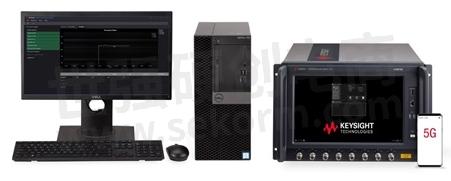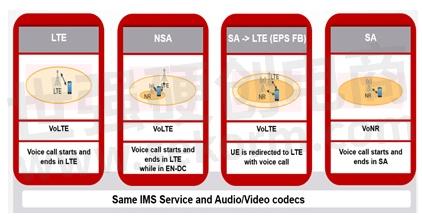Six key functionalities that will set your 5G product ahead of competitors

Realizing the full potential of 5G requires that all the components in a 5G device work properly and seamlessly with others. That includes radio units and non-radio units such as processors and batteries.
In most cases, speed is the key measure for the 5G user experience. However, many factors other than the radio unit could affect 5G device speed performance. Additionally, speed is not the only performance indicator for 5G devices. More and more performance indicators have emerged. Different device types require different performance indicators and measuring standards.
What are the key performance indicators for 5G devices? Why are they so important? How do you address them during the 5G device design process?
Key Functionalities:
1. Data throughput:
One of the key features of 5G NR is enhanced mobile broadband (eMBB), which promises 10Gbps peak throughput, and 1 Gbps throughput in mobile scenarios. Inside a 5G device, other than the radio components, many other components that process IP and MAC layer throughput need to support such speed. All processing units need to process data equally fast as the radio transmitting speed. In other words, if a user experiences a slowdown, the problem might not be from the wireless connection. It is possible that many other data processing units dropped the ball. Proper verification and testing of device data throughput will help 5G device makers ensure their data processing units can keep up with the 5G speed standard.

Figure 1. Keysight’s S8703A Functional KPI Toolset setup
Keysight's S8703A Functional KPI Toolset leverages the power, flexibility, and test coverage of the market-leading E7515B UXM 5G Wireless Test platform. It provides an automated benchtop solution for the verification of 4G and 5G user experience testing around key functional test areas.
The S8703A solution has a smart scheduling function that helps users to simplify scheduling configuration for different modes and frame structures, and it considers all necessary parameters required to configure the scheduling settings.
2. power consumption/battery life:

Many elements of 5G communication challenge device battery life, including mmWave frequencies, higher-order modulation schemes, carrier aggregation, multiple carrier and multiple bands support, and many others. It is imperative for chipset and device manufacturers and even software vendors to closely monitor device performance in relation to the current drain while performing routine real-user tasks such as paging, standby mode, voice calls, and data streaming. In addition to this, power and data-hungry applications are constantly running in the background, thus requiring thorough validation of battery performance over diverse user profiles.
With Keysight's S8703A Functional KPI Toolset, engineers can easily characterize battery performance by measuring device current drain while performing usage activities in idle or connected mode.
3. Audio:

Figure 2: Audio / Voice deployment scenarios for 5G
5G wireless networks have different voice call deployment scenarios. You need to test and verify different scenarios to ensure wireless devices can be functional in all use cases. Current 5G networks support one of the four-voice deployment scenarios in Figure 2.
These scenarios are critical to real-world performance, so testing each scenario carefully is essential. Keysight's S8703A Functional KPI Toolset helps device makers to define a test campaign that includes key signaling parameters and conditions. With the powerful E7515B UXM network emulator, we can easily test audio performance under all possible audio scenarios with the latest LTE and 5G standards and specifications.
4. Mobility:
In wireless communication, devices must be able to seamlessly hand over between different cell sectors, bands, bandwidths, and networks while maintaining connectivity in idle or active mode. This is one of the most important performance indicators for mobile operators. 5G device makers need to consider and test all possible handover scenarios to make sure their connection transition is seamless. As operators continue to build more 5G networks, devices must be able to support standalone and dual connectivity handovers.
5. Emergency services
3GPP has clearly defined a public warning system for mobile devices to receive emergency alerts. Although this function exists outside of the ordinary wireless communication scenarios, 5G device designers must take it into consideration. The typical alert types are commercial mobile alert system (CMAS) and earthquake and tsunami warning system (ETWS). Devices must also support LTE and 5G NR message customization in different languages.
6. Dual Subscriber Identity Module (SIM):
Most new mobile devices support both physical and embedded SIM, thus increasing the need to ensure proper coexistence and functionality when both systems are active. Device designers need to test for common issues such as 5G NR aggregation, registration, and throughput. S8703A functional KPI Toolset along with the UXM 5G can easily detect issues in those aspects.
Conclusion:
With 5G technology, mobile devices are getting more and more compact. More features and more communication scenarios will emerge. Focus only on radio performance will no longer help you to have a marketing leading product. Considering a bigger variety of performance indicators, testing all these performance indicators properly with Keysight's S8703A Functional KPI Toolset will help you win.
- +1 Like
- Add to Favorites
Recommend
- Keysight Selected by NIO to Verify 5G and Cellular Vehicle to Everything (C-V2X) Connectivity in Electric Vehicles
- Keysight Solutions Selected by TMYTEK to Verify Performance of Antenna-in-Package Designs in 5G and Satellite Systems
- Monitor Battery Temperature By Using a Data Acquisition System or Specialized Keysight Scienlab Battery Test System
- Chief Marketing Officer of Keysight Shares about Emerging Technology Innovations to Expect in 2023 and Beyond
- Keysight Technologies Acquires Quantum Benchmar, Augmenting Keysight‘s Quantum Portfolio
- Keysight Selected by TCL to Accelerate 5G Device Validation in Manufacturing
- Keysight Solutions Selected by H3C for Peripheral Component Interface Express Compliance Validation and 5G Small Cell Performance Testing
- Keysight Selected by VTT to Support Open Testing and Integration Facility in Finland
This document is provided by Sekorm Platform for VIP exclusive service. The copyright is owned by Sekorm. Without authorization, any medias, websites or individual are not allowed to reprint. When authorizing the reprint, the link of www.sekorm.com must be indicated.











































































































































































































































































































































































































































































































































































































































































































































































































































